HUM / REL 293 - Beginning Latin
Pompeii - The Baths
The Thermae - Public Baths
Pompeii had four main public baths - the Forum baths by the Forum, the Stabian Baths on the Via Stabia (Stabian Way), the Suburban baths, just outside the Marine Gate to the city, and the Central Baths (which was unfinished at the time Vesuvius erupted) and which was also on the Via Stabia near Caecilius' house.
Each baths had separate areas for women and men. The Cambridge Course has a section in English about the baths (pages 154-159)
The Stabian Baths were originally built when the region was a Greek colony - before the Romans established their colony at Pompeii, ca. 100 BC.
The Palaestra
A Palaestra was an open-air exercise ground for the townsfolk.
Each of the baths had a palaestra associated, and there was also a large palaestra next to the amphitheater. The large palaestra had a swimming pool in the center.
Hypocaust
Not only the baths, but also private houses might have the system of heating known as the hypocaust. The name is Greek, from "hypo" (under) and "caust-" (heat, burn) because the first such system was invented in Greece. However, it was adopted and improved by the Romans.
Some of King Herod's palaces on the top of Masada, overlooking the Dead Sea, have hypocausts.
When I was working at London University I would often spend a week-end working at one of the archaeological digs around the city. There was one south of the Thames, at the site of the Black Prince's palace (the Black Prince, the heir to the throne of England, died in 1376 when his ship was wrecked in the British Channel).
It was a "rescue dig" to get information about the site before construction crews moved in to build high-rises and a parking lot. I was working away clearing dirt from between some of the limestone building blocks of the palace, when one of the other workers called out "Hey - there's what looks like a Roman villa over here!"
Sure enough, beside two modern row-houses which had been bombed in WWII and left vacant ever since, there were traces of a Roman villa. The dig director got one of the guys with a mallet to crack up the concrete parking place by the houses, then put Kate and me to work with pickaxes to pry the concrete off whatever was beneath. That was the only time I've ever used a pickaxe on an archaeological dig - it's usually trowel and paint-brush, and sift through every bit of dirt with a sieve. Kate was left-handed, I'm right-handed - we could swing a couple of pickaxes at the same spot and not hit each other. Well, about six inches down we had to stop using the pickaxes - we were through the concrete, and straight into the hypocaust system of the Roman villa. It was the nicest, cleanest, dig I ever had around London - much better brick-work and tiles than the palace, and clean and dry.
That's London - go down six inches, and you might find Roman, Saxon, Norman, Elizabethan, or Victorian; and the best plumbing for centuries was the Roman. Elizabethan sewers were "interesting" - narrow little pipes full of black slime and rotting bits of sandals, buttons, and unidentified schlock.
![]()
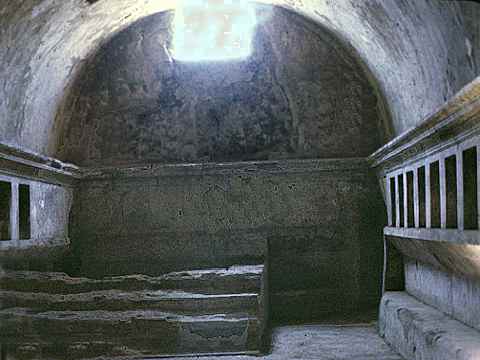
Stabian Baths - the women's section
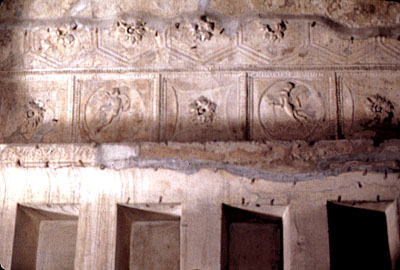
Stabian Baths - niches for clothes
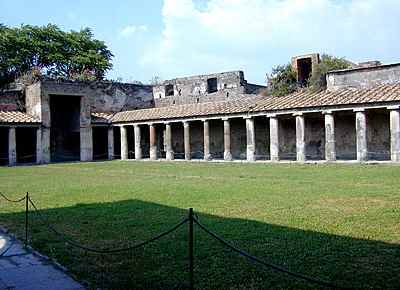
Stabian Baths - the Palaestra
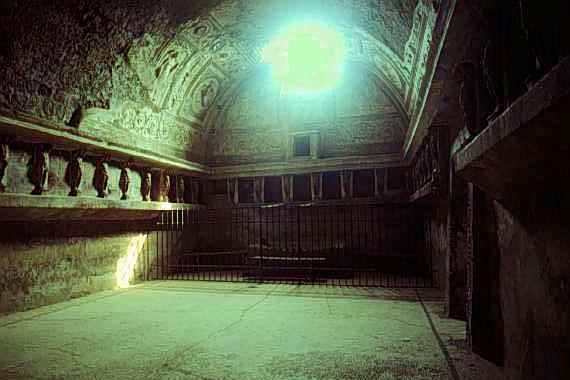
Forum Baths - Tepidarium
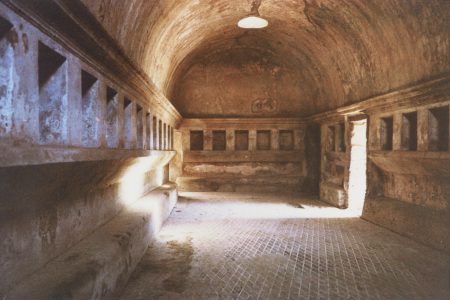
Tepidarium, men's baths
![]() Back to this Week's Assignment
Back to this Week's Assignment
![]()
Copyright © 1999 Shirley J. Rollinson, all Rights Reserved